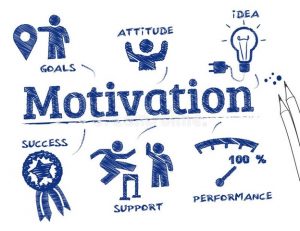Did you take the Why Do You Do Your Work assessment? Read on and at the bottom of my blog post, you’ll find a key with detail on your results!Motivation describes why a person does something. According to current psychology, motivation involves biological, emotional, social, and cognitive forces that initiate, guide, and maintain goal-oriented behaviors requiring endurance to keep going and the ability to persist through obstacles in spite of difficulties.
As part of my work, I’m commonly asked to give an opinion of a person’s motivation to find work or to keep work (in the realm of job search or job retention). I can uncover a match in skills, education, and experience, and have motivation scales available which help form my opinion, yet still this x-factor of success is extremely difficult to determine.
However, creative interviewing that generates specific examples from a person’s work history provides further evidence. Couple this with contacting the person’s previous or current supervisor, which I believe to be the best and most reliable method of assessing a person’s level of self-motivation, to get their input.
For example questions to ask a supervisor / former employer could include (all questions would be tailored to the worker, and focused on productivity): Is the person capable of following through consistently without supervision? Does the person handle customer complaints independently? Does the person show up on time as scheduled? Would you say this person is motivated to learn new skills? You get the idea I hope, as answers to specific questions help form opinions.
Motivation can be used to explain behavior. In general, intrinsic motivations (driven by an interest or enjoyment in a task) arise from within; while extrinsic motivations arise from outside the person (and often involve rewards such as money, trophies, social recognition or praise.)

When young and in swim club, I received these swimming trophies! I was motivated to swim, swim, swim but really don’t know why because I certainly didn’t think of trophies when I was competing.
There are 3 major components to motivation: activation, persistence, and intensity. Activation involves the decision to initiate a behavior. Persistence is the continued effort toward a goal even though obstacles may exist. Intensity can be seen in the concentration and vigor that goes into pursuing a goal. Each of these components can be assessed and described in detail.
A few signs of self-motivation in a job search (considering obstacles) that I can report on and/or testify to include:
- Applying to numerous businesses each week.
- Performing informational interviewing as well as direct interviewing.
- Scheduling time to research companies and using results to benefit job seeking “marketing” campaign.
- Critiquing one’s own job search and learning from efforts.
- Participating in short term skill building activities while in job search mode.
- Volunteering in a useful and purposeful area.
If currently employed, I have also been asked to provide my opinion of a worker’s motivation to do their best at work (again, considering obstacles). A few signs of self-motivation on the job that I can report on and/or testify to include:
- A history of doing more than just what is required.
- Consistently exceeding performance expectations.
- A history of working the amount of time/hours necessary to get the job/project done, not just the “required” hours.
- Participating in activities that will benefit the bottom line of the business.
- Helping and supporting co-workers and supervisors
- Sharing talents and information openly, in an optimistic manner
In summary, success in a job search or success on-the-job requires self-motivation. If there is proof of high achievement that can be duplicated (once again, considering obstacles), strong self-motivation is suggested.
Why Do You Do Your Work?
 The key along with information on your results:
The key along with information on your results:
Motivation Results and Descriptions
Intrinsic motivation: 4,8,15;
Integrated regulation: 5,10,18;
Identified regulation: 1,7,14;
Introjected regulation: 6,11,13;
External regulation: 2,9,16;
Amotivation: 3,12,17.
***
Intrinsic motivation refers to behavior that is driven by internal rewards and is inspired solely from the interest and enjoyment a person finds in an activity.
Integrated regulation arises when a person has fully integrated a motivation within, and behavior is influenced after undergoing self-examination and then internalizes and assimilates the reasons behind an action. S/he has carefully explored external motivations and decided that they’re congruent with his or her other personal beliefs and values. An example of integrated regulation as motivation would be a person who attends church through the belief the act aligns with a personal belief system, even if the person doesn’t attend for the sheer enjoyment of it. The person doesn’t feel guilt or shame if s/he doesn’t attend, s/he attends because it feels right and suitable.
Identified regulation is when a person has personally identified with the importance of a behavior and accepted it as a regulation of her own because it benefits her in achieving a goal, she’s motivated by identified regulation. With this form of motivation, the individual doesn’t have to find enjoyment in the behavior, and there doesn’t have to be an immediate reward. The person also isn’t motivated by guilt or shame: She simply recognizes that a behavior is beneficial toward her development and adopts that behavior as her own. For instance, a person may recognize that studying grammar for English class is an important means to the end of becoming a successful writer. This is a subcategory of external motivation that’s more self-determined and personal than external regulation: External regulation may be for a more immediate positive reward, while identified regulation is used to achieve an end that affects an individual’s personal well-being and desires.
Introjected regulation is motivation from an internalized, pressuring voice. The source of motivation for a behavior is guilt, worry or shame. Introjected regulation inspires an individual to enact a behavior not because s/he wants to, but because s/he fears not to out of a sense of obligation. An example of introjected regulation is a person who goes to church every Sunday because s/he fears a negative effect in the afterlife or the negative reaction of peers at a church event — s/he doesn’t necessarily find enjoyment in the service itself. Avoid this form of motivation if at all possible, as it fosters anxiety. When succumbing to this form of motivation, it’s difficult for individuals to feel positive and confident about their actions.
External regulation. People are motivated by external regulation due to an external acting influence. If an individual exhibits a behavior to obtain an externally provided reward, then her behavior is externally regulated. For example, if a person enters the science fair because she wants to win a gift certificate for a restaurant, she’s not acting out of what interests her personally but out of a desire to obtain the reward. External motivation is often used to encourage employees or students to take part in a behavior that they must complete but may not be genuinely interested in — that way, even if they don’t otherwise wish to engage in the behavior, they do so to obtain the reward.
Amotivation is a state of lacking in any motivation to engage in any activity, characterized by a lack of perceived competence and/or a failure to value the activity or its outcomes.
Sources for above are taken in part from http://www.ehow.com/info_12153839_5-different-types-motivation.html
Do you want more assessment information or want to read more? Here’s an earlier blog about motivation. And here’s one about Randy and his work ethic. Read on then call me! 515-778-0634
___________________
My professional consulting practice focuses on helping attorneys help their clients with civil litigation matters.

